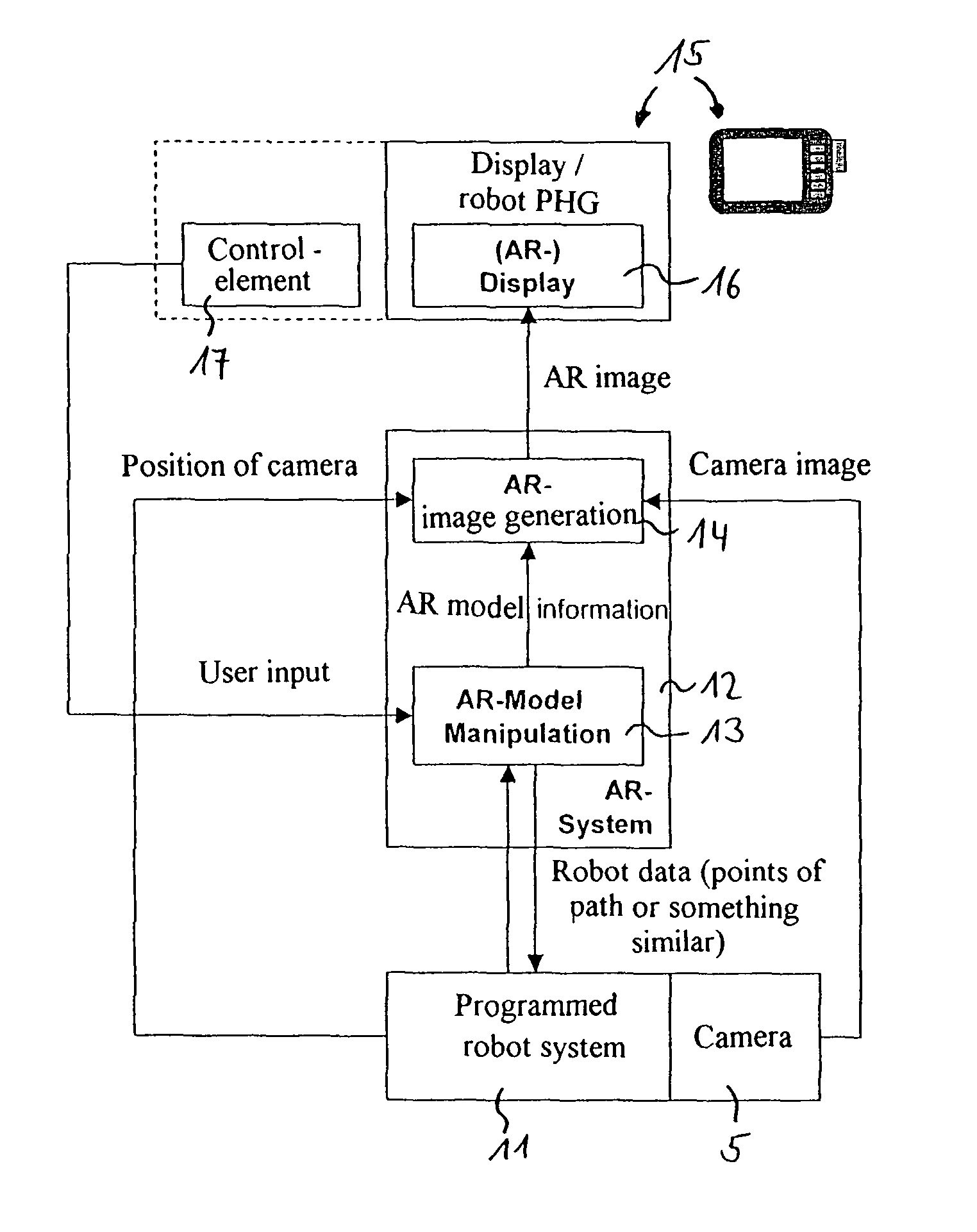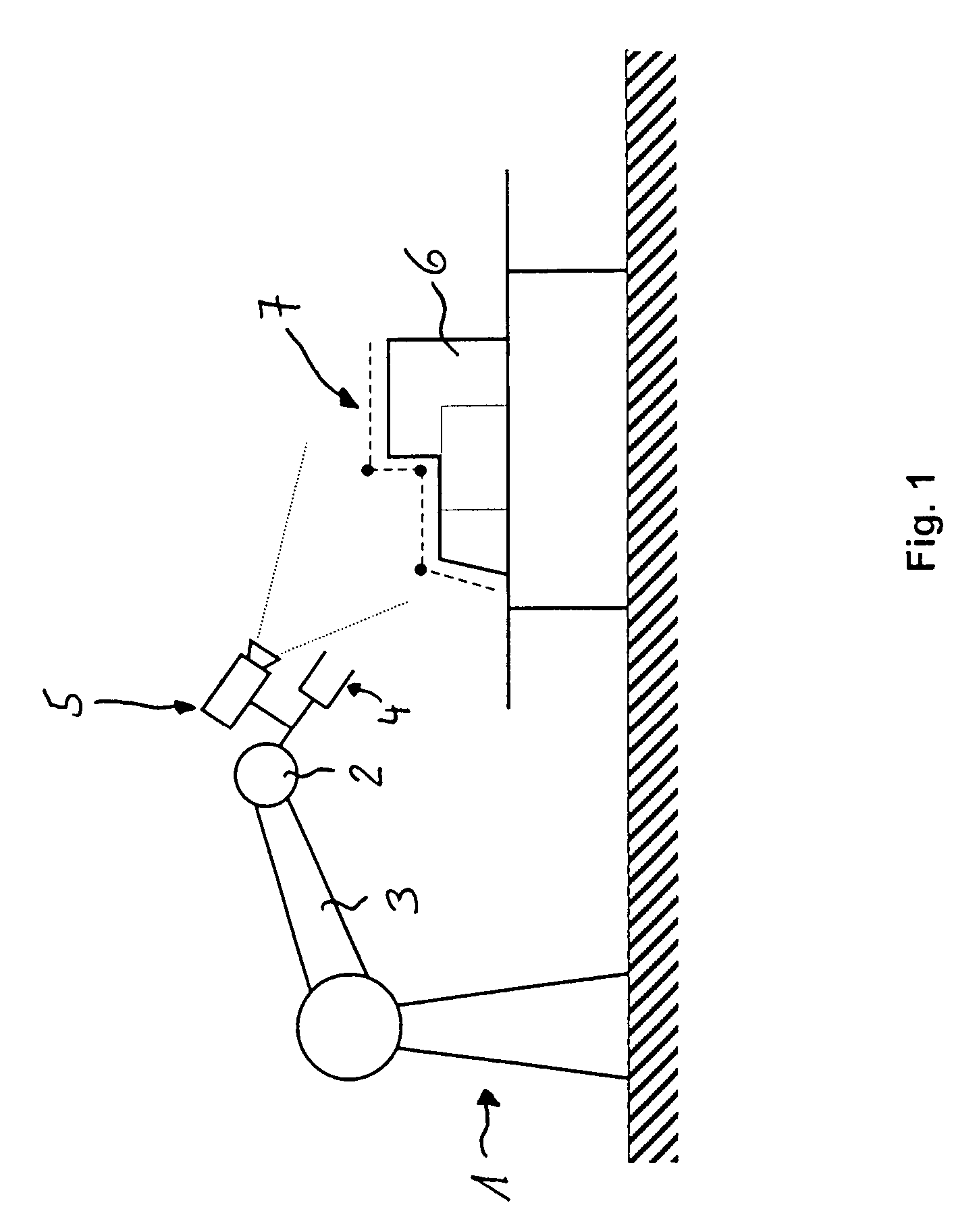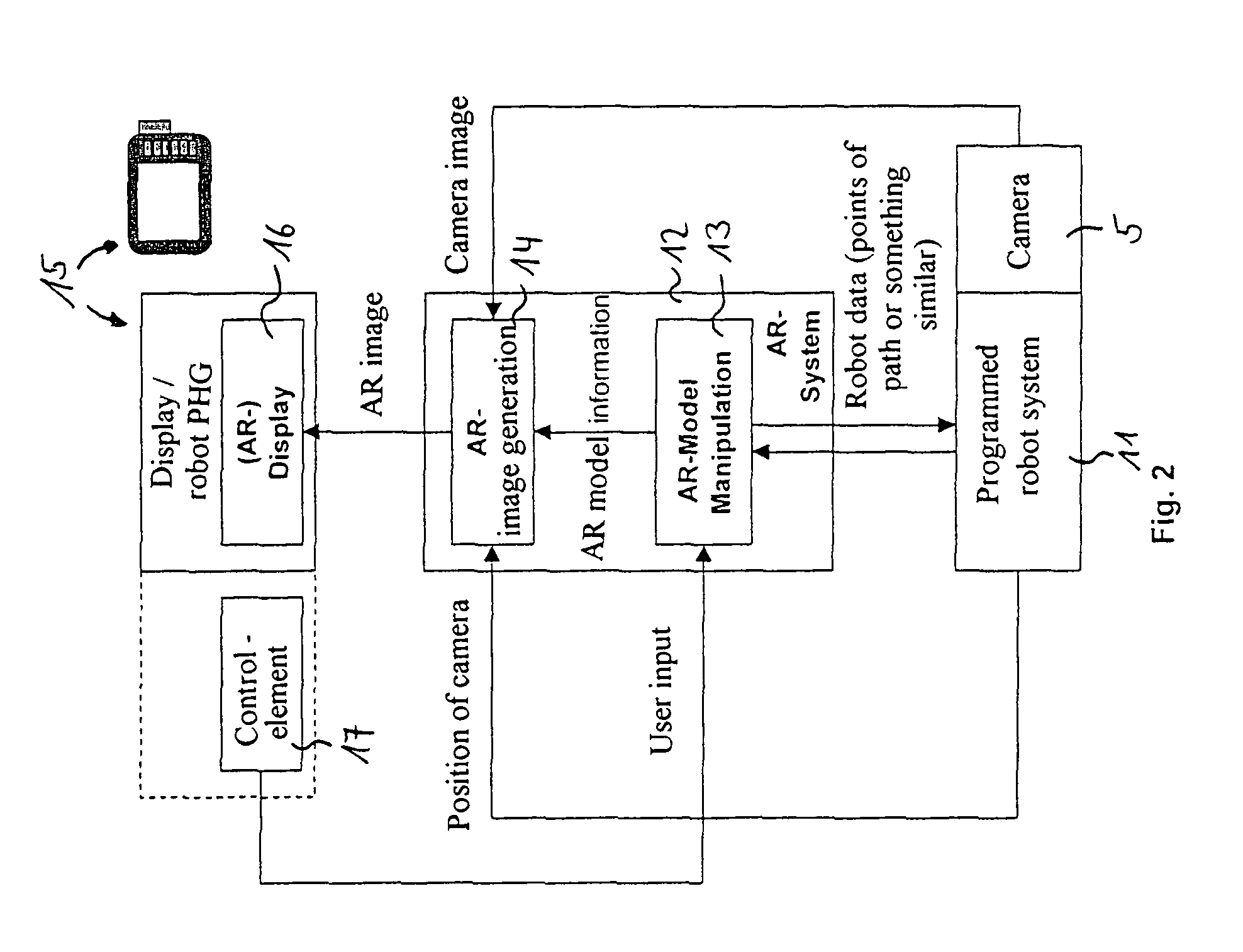Process and device for determining the position and the orientation of an image reception means
a technology of image reception and processing device, which is applied in image enhancement, programme control, exposure control, etc., can solve the problems of not reaching high accuracies, affecting the and limiting the optical quality of the camera, so as to achieve high accuracy of the determination of the pose without excessively high costs
- Summary
- Abstract
- Description
- Claims
- Application Information
AI Technical Summary
Benefits of technology
Problems solved by technology
Method used
Image
Examples
Embodiment Construction
[0039]Referring to the drawings in particular, FIG. 1 schematically shows, as an example of an automatic handling device or robot, a multiaxial industrial robot 1, which is provided with a tool 4 in its hand area 2 at the front end of its robot arm 3. An image reception means 5 in the form of a camera is arranged at the tool 4 in the exemplary embodiment being shown. Furthermore, workpieces 6 as well as a programmed robot path 7, which is to be traveled by the robot and is associated with the workpieces 6, are shown.
[0040]Not shown is a display associated with an operator or user with a display of the real image recorded by the image reception means 5 and with the insertion of virtual information, especially image information, assigned to the real image in the correct position.
[0041]To display augmented objects by insertion in the correct position on the display, the position of the image reception means 5 (camera) in the space must be known. This can be determined with high precisi...
PUM
 Login to View More
Login to View More Abstract
Description
Claims
Application Information
 Login to View More
Login to View More - R&D
- Intellectual Property
- Life Sciences
- Materials
- Tech Scout
- Unparalleled Data Quality
- Higher Quality Content
- 60% Fewer Hallucinations
Browse by: Latest US Patents, China's latest patents, Technical Efficacy Thesaurus, Application Domain, Technology Topic, Popular Technical Reports.
© 2025 PatSnap. All rights reserved.Legal|Privacy policy|Modern Slavery Act Transparency Statement|Sitemap|About US| Contact US: help@patsnap.com



